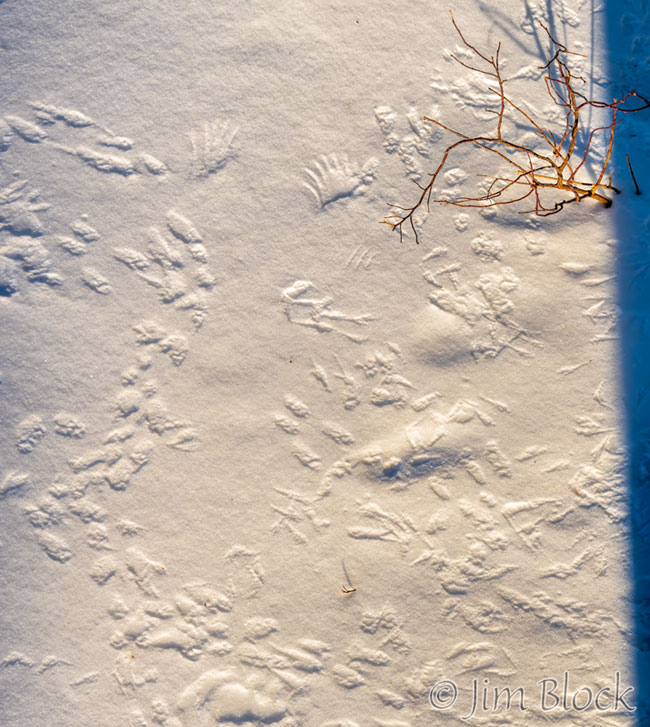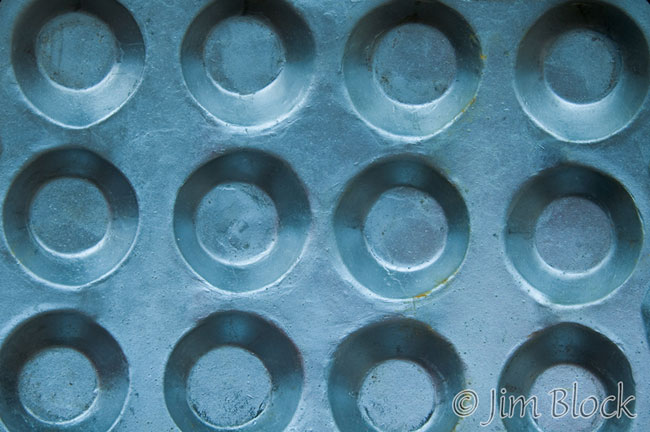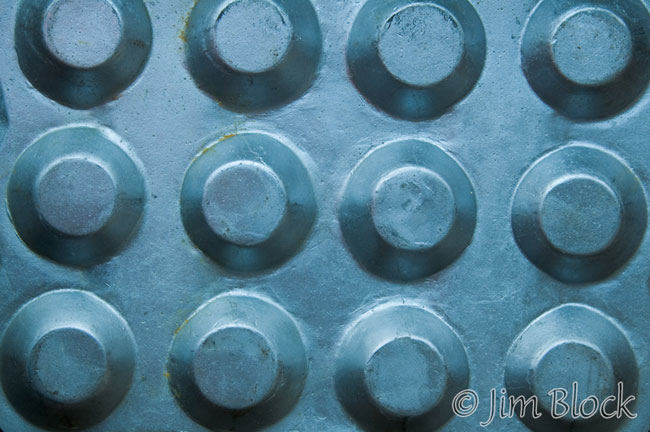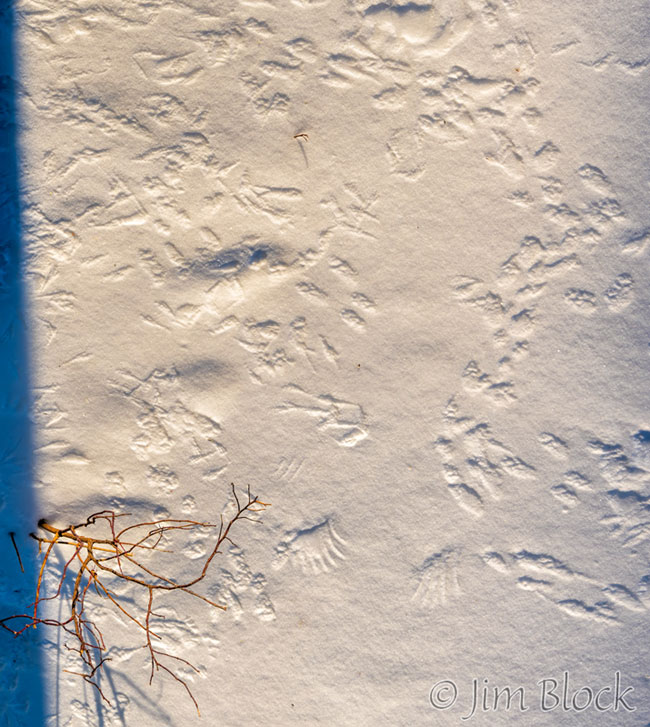I recently took this photo of tracks in my yard. This is the way I took it with the bottom of the photo nearest me. But the tracks look “wrong”. If you study them, some or all look raised rather than depressed like they should be. How could this happen? I remembered part of a lesson from the Photo Classes I teach and that provided the answer.

Here is a photo of a muffin pan. Are the “dimples” for the muffins concave (inward) or convex (outward) in this view?

Here is another view of the same muffin pan. Are the “dimples” for the muffins concave or convex in this view?

Most people will answer concave for the first view and convex for the second view. So what? So what is the point of all this? What is the trick I am playing on you?
In fact I only took ONE photo of the muffin pan. The two image above are identical. All I did was rotate one 180 degrees.
We are accustomed to light coming from above and that conditioning is what causes us to sometimes misinterpret what we see. Photos don’t (often) lie, but our brains can fool us.
Back to the tracks in the snow. Here is another view. Again, I only took one photo — this one is rotated 180 degrees to cause the light to come from the top of the photo. Now the tracks look indented like they should be. You can compare it with the photo at the top of this article.

So the next time you are photographing animal tracks, or muffin tins, you might consider orienting the light “properly” or rotating the resultant photo.
